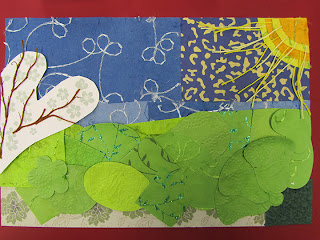We made all size flowers and butterflies using wax shavings – this technique is very much similar to batik, it creates a similar effect but we are working with wax paper instead of hot wax.
First we got some wax paper and chose a flower
template and drew around the template.
Using a sharpener we got a wax crayon and sharpened the crayons, two colours
often work well but I chose to do more than 2 and sometimes used 3-4. We mixed
all the colours almost like mixing spices together and placed them inside the
paper.
The paper was then ironed and as soon as the hot
iron was placed on the paper, the wax was melted. It was good to see all the
colours mix together.
Once the wax paper cooled we cut out the flower and
stitched a button on it.
“Our favourite part was watching all the colours blend
together”.

































